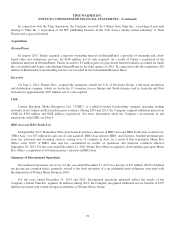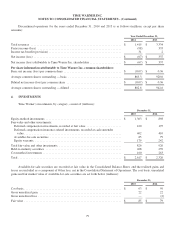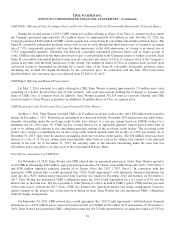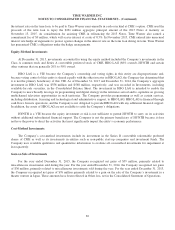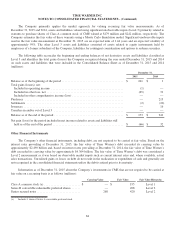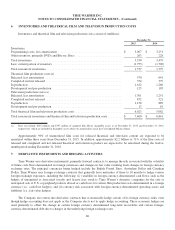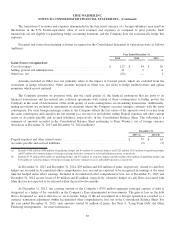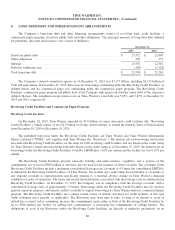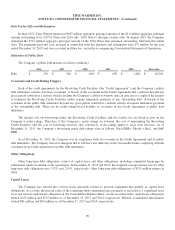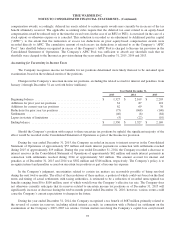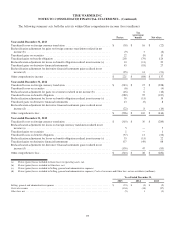Time Magazine 2015 Annual Report Download - page 99
Download and view the complete annual report
Please find page 99 of the 2015 Time Magazine annual report below. You can navigate through the pages in the report by either clicking on the pages listed below, or by using the keyword search tool below to find specific information within the annual report.
TIME WARNER INC.
NOTES TO CONSOLIDATED FINANCIAL STATEMENTS - (Continued)
The fair values of the Company’s investments in CME’s Class A common stock (including Series A convertible
preferred stock) and Series B convertible redeemable preferred shares are primarily determined by reference to the
December 31, 2015 closing price of CME’s common stock. The fair value of the Company’s investment in CME’s Senior
Secured Notes is primarily determined by reference to observable sales transactions.
The carrying value for the majority of the Company’s other financial instruments approximates fair value due to the
short-term nature of the financial instruments or because the financial instruments are of a longer-term nature and are
recorded on a discounted basis.
Non-Financial Instruments
The majority of the Company’s non-financial instruments, which include goodwill, intangible assets, inventories and
property, plant and equipment, are not required to be carried at fair value on a recurring basis. However, if certain triggering
events occur (or at least annually for goodwill and indefinite-lived intangible assets), a non-financial instrument is required to
be evaluated for impairment. If the Company determines that the non-financial instrument is impaired, the Company would
be required to write down the non-financial instrument to its fair value.
During the year ended December 31, 2015, the Company performed an impairment review of certain intangible assets
at an international subsidiary of Turner. As a result, the Company recorded a noncash impairment of $1 million to completely
write off the value of these assets. During the year ended December 31, 2014, the Company performed impairment reviews
of a tradename at Warner Bros., as well as certain intangible assets at international subsidiaries of Turner and Home Box
Office. As a result, the Company recorded noncash impairments of $17 million to write down the value of these assets to
$12 million. The resulting fair value measurements were considered to be Level 3 measurements and were determined using
a discounted cash flow (“DCF”) methodology with assumptions for cash flows associated with the use and eventual
disposition of the assets.
During the years ended December 31, 2015 and December 31, 2014, the Company also performed fair value
measurements related to certain theatrical films and television programs. In determining the fair value of its theatrical films,
the Company employs a DCF methodology that includes cash flow estimates of a film’s ultimate revenue and costs as well as
a discount rate. The discount rate utilized in the DCF analysis is based on the weighted average cost of capital of the
respective business (e.g., Warner Bros.) plus a risk premium representing the risk associated with producing a particular
theatrical film. The fair value of any theatrical films and television programs that management plans to abandon is zero.
Because the primary determination of fair value is made using a DCF model, the resulting fair value is considered a Level 3
measurement. The following table presents certain theatrical film and television production costs, which were recorded as
inventory in the Consolidated Balance Sheet, that were written down to fair value (millions):
Carrying value
before write down
Carrying value
after write down
Fair value measurements made during the year ended December 31,:
2015 ............................................................... $ 419 $ 215
2014 ............................................................... 331 201
85





